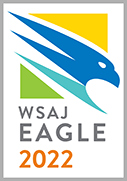When I heard the terrible news that a Sikorsky S-76B carrying nine people, including Kobe Bryant and his daughter, crashed near Calabasas, California, I checked the weather.
Heavy fog.
I then reviewed the Air Traffic Control recordings.
SVFR (Special Visual Flight Rules).
I then learned that the helicopter was not equipped with TAWS (Terrain Awareness and Warning System).
The thing most people – even most pilots – don’t know is that helicopters have less stringent weather regulations than airplanes. As a Federal Aviation Administration (FAA) certified instrument rated airplane pilot, and a FAA certified helicopter pilot, let me explain:
The pilot flying Kobe Bryant’s helicopter was operating under what are called Visual Flight Rules, or VFR. Pilots operating under VFR are subject to basic weather minimums that are specific to certain types of airspace and altitudes.
The VFR weather minimums, (and VFR flight in general) is based on a concept termed “see and avoid.” The whole system relies on the pilot’s ability to see the terrain and other aircraft around them. The weather minimums are established to make sure that compliant pilots can “see and avoid.”
By contrast, Instrument Flight Rules, or IFR, are based on a system which does not rely on a pilot’s ability to see outside of the airplane or helicopter until just before (or at the point of) landing. To be able to fly an airplane in instrument conditions, I had to take special training, and need to use a specially equipped aircraft. Only then, could I legally fly in Instrument Meteorological Conditions, or IMC.
One of the most common accident causes is termed “VFR into IMC.” That is what happens when a pilot flying VFR encounters IMC conditions, and does not have the training, or equipment to fly in those conditions. The result of inadvertent VFR into IMC is often Controlled Flight Into Terrain (CFIT, pronounced see-fit), and a fatal accident.
Here is what a lot of airplane pilots don’t know: Helicopters are allowed to operate in VFR conditions that would be illegal for an airplane.
For example, let’s assume I am flying an airplane in Class G (uncontrolled) airspace, under Visual Flight Rules (VFR) in the daytime, and that I am operating less than 1,200 feet above the surface. Federal Aviation Regulation (FAR) 14 CFR 91.115 requires that I have 1 mile of visibility and stay clear of clouds. If I land the airplane and jump into a helicopter, I only need ½ mile of visibility. If the same scenario took place at night, I would need 3 miles of visibility if I were flying the airplane, but only 1 mile of visibility in the helicopter.
The situation compounds in what is called Special VFR, or (SVFR).
Under SVFR, airplane and helicopter pilots can fly in less than VFR minimum weather conditions under certain special conditions. All SVFR operations require a clearance from Air Traffic Control, and must be conducted clear of clouds. If I was flying an airplane and wanted to operate under SVFR, I would need permission from ATC and would need 1 mile of visibility. Only pilots with instrument ratings can fly airplanes VFR at night, and they can only do so in an instrument-equipped aircraft. Since I have an instrument rating, I could operate SVFR at night, but would still need at least 1 mile of flight visibility.
The regulations are completely different for helicopters. Unlike in an airplane, if I’m flying a helicopter in the day under SVFR, I no longer have to have 1 mile of visibility, and if I fly at night under SVFR, I no longer need to have an instrument rating or an instrument equipped helicopter.
Helicopters have less stringent weather minimums than airplanes. At the same time, even large helicopters, such as the S-76B involved in the accident, are not required to have a TAWS, or Terrain Awareness and Warning System. A TAWS system combines GPS-based aircraft position, speed, and direction, and combines it with aircraft altitude and configuration information. It then compares that information to radar topography information to give information and warnings to pilots about the terrain around them. Washington State based Honeywell Aviation began designing TAWS systems in the 1970’s, and such systems are common on airplanes. TAWS is required on Part 91 and Part 135 turbine powered airplanes with at least passenger seats. Not so for helicopters.
In March of 2004, a Sikorsky S-76A++ crashed off the Gulf of Mexico due to CFIT. Following that accident, the National Transportation Safety Board recommended that all turbine powered helicopters capable of carrying six or more passengers be equipped with a TAWS system. To this date, the FAA has refused to make such systems mandatory.
There have been no significant improvements in helicopter safety in the last 20 years. Unfortunately, safety advancements in aviation are often the result of accidents, and the regulations and lawsuits that follow. I will wait to see if the FAA requires TAWS on large helicopters carrying passengers – I hope that they do.
Jimmy Anderson is an Attorney with Krutch Lindell Bingham Jones, representing victims of aviation accidents and other aviation related incidents.

